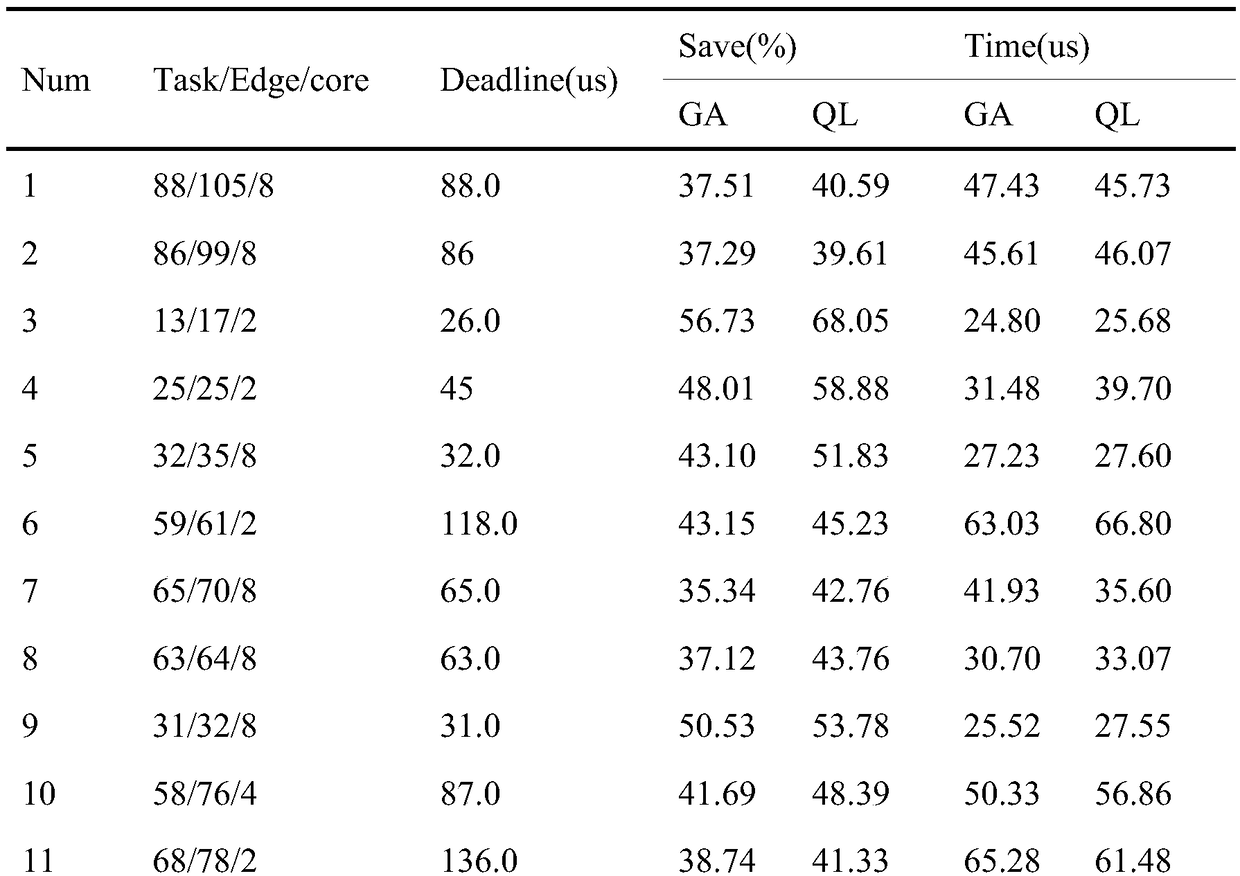Energy consumption optimization scheduling method for heterogeneous multi-core embedded systems based on reinforcement learning
An embedded system and heterogeneous multi-core technology, which is applied in the field of energy optimization scheduling of heterogeneous multi-core embedded systems, can solve the problems of genetic algorithm adjustment search direction, insufficient local search ability, poor local search ability, etc., and achieve good local search Ability, optimization execution energy consumption, optimization effect effect
- Summary
- Abstract
- Description
- Claims
- Application Information
AI Technical Summary
Problems solved by technology
Method used
Image
Examples
Embodiment Construction
[0031] In order to facilitate those of ordinary skill in the art to understand and implement the present invention, the present invention will be described in further detail below in conjunction with the accompanying drawings and embodiments. It should be understood that the implementation examples described here are only used to illustrate and explain the present invention, and are not intended to limit this invention.
[0032] In view of some limitations of GA and SA algorithms, this embodiment attempts to use the Q-Learning algorithm in reinforcement learning to find a new optimal solution. Q-Learning overcomes the defect that the genetic algorithm cannot use the network feedback information. It can effectively interact with the environment, and adjust the network search direction in real time according to the environmental feedback information, making the search more efficient. The essence of the Q-Learning algorithm is a way to use trial and error to find the optimal solu...
PUM
 Login to View More
Login to View More Abstract
Description
Claims
Application Information
 Login to View More
Login to View More - R&D
- Intellectual Property
- Life Sciences
- Materials
- Tech Scout
- Unparalleled Data Quality
- Higher Quality Content
- 60% Fewer Hallucinations
Browse by: Latest US Patents, China's latest patents, Technical Efficacy Thesaurus, Application Domain, Technology Topic, Popular Technical Reports.
© 2025 PatSnap. All rights reserved.Legal|Privacy policy|Modern Slavery Act Transparency Statement|Sitemap|About US| Contact US: help@patsnap.com



